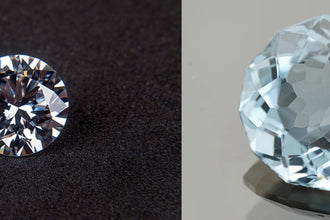
When Jewelry from ethnic communities that uphold a distinct culture from that of their own country is referred to as ethnic jewelry. Ethno is a shortened version of ethnology. Ecology is what this is. As a result, ethnic jewelry may be found everywhere. Therefore, the attire of tribal tribes serves as the primary inspiration for ethnic jewelry creation. For instance, the jewelry may have both an eastern and an African influence. They may also be manufactured of a variety of substances. Typically, several materials are used to create ethnic jewelry.
WHAT SETS APART ETHNIC JEWELRY?
Typically, ethnic jewelry is quite conspicuous. The majority of the jewelry is brightly colored, embellished with feathers, or it is composed of materials that are uncommon for traditional jewelry, such as threads, ribbons, elastic bands, leather, or rubber. Ethnic jewelry is also distinguished by its propensity to be larger. Necklaces, bracelets, and necklaces are frequently longer or wider. Typically, the earrings are very lengthy. Bracelets are so wide that they can almost reach the crook of the arm and can cover the entire wrist. But jewelry need not necessarily be vibrant; it can also be timeless and elegant in natural tones.
One's beauty can be enhanced by jewelry. Additionally, it represents prestige, riches, and power. Some people use jewelry as a means of self- and artistic expression. Then some incorporate jewelry into their culture and custom. They all have important duties to play, even though their significance and relevance may vary.
Significance of ethnic jewelry in Indian culture:
Jewelry serves a symbolic purpose in Indian culture. Particularly at weddings, they have symbolic ethnic and religious implications. The bride's jewelry is a sign that she will join her husband's family after they get married. They are a component of the ceremony of cleansing as she joins her bridegroom's extended family.
Indians place a premium on the finer details of bridal jewelry. The more significant the subtleties of these jewels are, the more impact they have on both the family legacy and the jewelry itself. Therefore, the family frequently ensures that the jewelry is heavier with more distinctive designs before giving it to the bride.
There are religious jewels in addition to the bridal jewelry worn by the bride. In Hinduism, these are frequently linked to the Gods and Goddesses. Wearing these jewelry items is a message that you are pleading with these celestial beings for protection. It serves as a means of seeking blessing.
Various Jewelry Materials and the Value of Each
As was already established, jewelry has a very deep meaning in both tradition and religion. And precious stones, metals, or a mix of these, are used to make these pieces of jewelry.
Gold
The most common metal used to create jewelry is gold. It is sturdy and remains tarnish-free despite frequent use. Many Hindus value gold as being valuable. Hindus think that gold can purify anything it comes into contact with. It is also regarded as a symbol of prosperity and power. In addition, it represents femininity, affluence, and excellent health.
Silver
Another metal that people frequently wear is silver. It is placed alongside gold. Gold jewelry is worn above the waist in Hindu culture. Silver can be worn from the waist down in the interim. Most anklets, ankle rings, and bracelets are composed of silver. In their culture, silver denotes magic protection. Silver, according to Hinduism, represents the Moon or Luna. It represents motherhood and femininity. Additionally, it is thought to enhance one's dreams and assist in overcoming unpleasant emotions.
Copper
Copper is another common metal to be worn. Copper is frequently linked to wealth and procreation. Due to its high conductivity, this metal can easily combine with other metal alloys to create jewelry that is both more conductive and durable. Jewelry made of copper represents love, serenity, and improved relationships with your loved ones. Additionally, it can aid in improving relationships with others.
Platinum
Platinum is one of the priciest metals used in jewelry production. It is simple to clean; to restore its luster, use a soft cloth and a little soap. It is also referred to as a hypoallergenic metal, making it ideal for those with allergies.
Diamond
One of the most widely used gemstones in jewelry is the diamond. It frequently relates to nuptials and engagements. According to legend, a diamond gives its wearer comfort. They will succeed because of the magical properties this stone possesses. The diamond is a symbol of innocence, purity, and unending love.
According to Indian culture, a diamond has a different meaning for each caste. The hues of the jewels are also influenced by the individual's characteristics. Brahmins are required to wear a white diamond, while Kshatriyas must adorn themselves with red gemstones to represent the submission of those in lower castes. Sudras, who belong to the lowest caste, must dress in black. The Baniyas will wear yellow in the interim.
Religious and wedding jewelry
Indian traditional weddings are frequently vibrant and extravagant in comparison to Western weddings. The bride adorns herself with several elaborate decorations. These jewels cover the bride's entire body. Necklaces represent safety and wealth. Having a piece of nose jewelry indicates that the bride is of legal marriageable age. Ear jewelry represents the bride's physical and mental well-being.
Marriage also frequently involves the usage of rings. A web-like hand adornment known as the haath phool is also used in Indian weddings in addition to the traditional one-finger ring. They also have head decorations that serve as both a marker of their marital status and a protective covering for the wife and husband. Anklets and toe rings help the woman maintain her vitality and encourage healthier menstrual periods.
Religious jewelry serves as a representation of the wearer's faith. Depending on the wearer's religion, religious jewelry takes on a variety of designs. Each religion has a distinctive look that makes it simple to distinguish between them. Religious jewelry is frequently worn as charms and amulets to ward off evil spirits.
You can wear some religious jewelry between your brows. This is referred to as the Tilak. This reliquary represents the soul's entrance. It makes the wearer feel like they belong. In addition, they feel a little bit closer to their divine selves as a result.
JEWELLARY AND MODERN TIMES
Traditions have altered over time. Jewelry, however, never changes. There is a change from wooden jewelry to metal designs. To build more durable jewelry, jewelers have learned to combine different valuable metals. In addition, they have begun to use several stones like garnet and amethyst that are uncommon in conventional jewelry.
These modifications to jewelry design and creation open the door to its mass manufacture. They are no longer just for ceremonial or religious purposes. They can also be used to improve someone's appearance, though. Colors can now be employed to match various outfits and occasions rather than being determined by one's social standing.
Conclusion
In general, jewelry is significant to both culture and religion. Jewelry has never lost value despite changes in the composition and design of the pieces.
Browse the best ethnic jewelry designs on sneharateria.com now.







